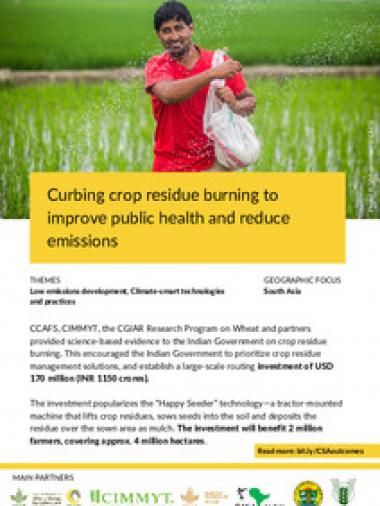Curbing crop residue burning to improve public health and reduce emissions

CCAFS, CIMMYT, the CGIAR Research Program on Wheat and partners provided science-based evidence to the Indian Government on crop residue burning. This encouraged the Indian Government to prioritize crop residue management solutions, and establish a large-scale routing investment of USD 170 million (INR 1150 crores).
The investment popularizes the “Happy Seeder” technology—a tractor-mounted machine that lifts crop residues, sows seeds into the soil and deposits the residue over the sown area as mulch. The investment will benefit 2 million farmers, covering approx. 4 million hectares.
Citation
CCAFS. 2021. Curbing crop residue burning to improve public health and reduce emissions. Wageningen, the Netherlands: CGIAR Research Program on Climate Change, Agriculture and Food Security (CCAFS).